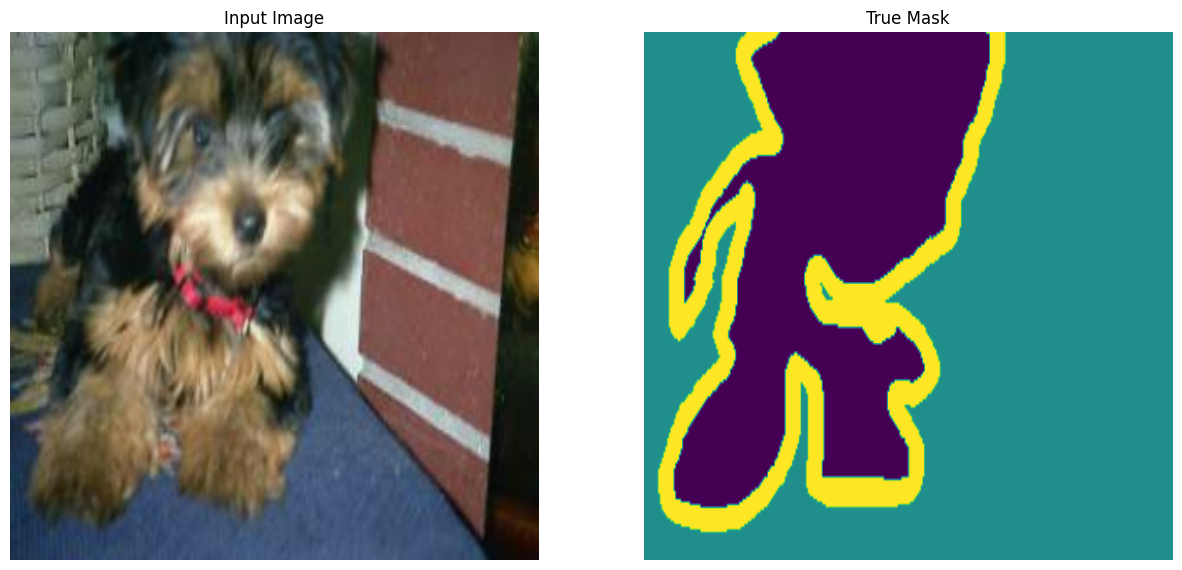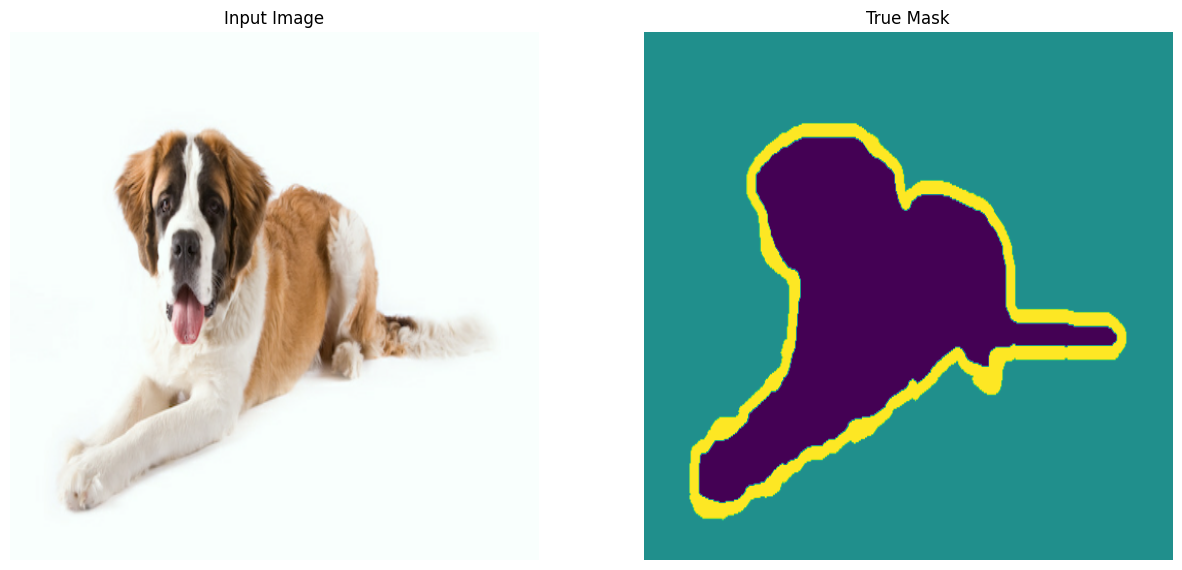Semantic segmentation with SegFormer and Hugging Face Transformers
Author: Sayak Paul
Date created: 2023/01/25
Last modified: 2023/01/29
Description: Fine-tuning a SegFormer model variant for semantic segmentation.
Introduction
In this example, we show how to fine-tune a SegFormer model variant to do semantic segmentation on a custom dataset. Semantic segmentation is the task of assigning a category to each and every pixel of an image. SegFormer was proposed in SegFormer: Simple and Efficient Design for Semantic Segmentation with Transformers. SegFormer uses a hierarchical Transformer architecture (called "Mix Transformer") as its encoder and a lightweight decoder for segmentation. As a result, it yields state-of-the-art performance on semantic segmentation while being more efficient than existing models. For more details, check out the original paper.

We leverage Hugging Face Transformers to load a pretrained SegFormer checkpoint and fine-tune it on a custom dataset.
Note: this example reuses code from the following sources:
To run this example, we need to install the transformers library:
!!pip install transformers -q
[]
Load the data
We use the Oxford-IIIT Pets dataset for
this example. We leverage tensorflow_datasets to load the dataset.
import tensorflow_datasets as tfds
dataset, info = tfds.load("oxford_iiit_pet:3.*.*", with_info=True)
/opt/conda/lib/python3.7/site-packages/tensorflow_io/python/ops/__init__.py:98: UserWarning: unable to load libtensorflow_io_plugins.so: unable to open file: libtensorflow_io_plugins.so, from paths: ['/opt/conda/lib/python3.7/site-packages/tensorflow_io/python/ops/libtensorflow_io_plugins.so']
caused by: ['/opt/conda/lib/python3.7/site-packages/tensorflow_io/python/ops/libtensorflow_io_plugins.so: undefined symbol: _ZN3tsl5mutexC1Ev']
warnings.warn(f"unable to load libtensorflow_io_plugins.so: {e}")
/opt/conda/lib/python3.7/site-packages/tensorflow_io/python/ops/__init__.py:104: UserWarning: file system plugins are not loaded: unable to open file: libtensorflow_io.so, from paths: ['/opt/conda/lib/python3.7/site-packages/tensorflow_io/python/ops/libtensorflow_io.so']
caused by: ['/opt/conda/lib/python3.7/site-packages/tensorflow_io/python/ops/libtensorflow_io.so: undefined symbol: _ZNK10tensorflow4data11DatasetBase8FinalizeEPNS_15OpKernelContextESt8functionIFN3tsl8StatusOrISt10unique_ptrIS1_NS5_4core15RefCountDeleterEEEEvEE']
warnings.warn(f"file system plugins are not loaded: {e}")
Prepare the datasets
For preparing the datasets for training and evaluation, we:
- Normalize the images with the mean and standard deviation used during pre-training SegFormer.
- Subtract 1 from the segmentation masks so that the pixel values start from 0.
- Resize the images.
- Transpose the images such that they are in
"channels_first"format. This is to make them compatible with the SegFormer model from Hugging Face Transformers.
import tensorflow as tf
from tensorflow.keras import backend
image_size = 512
mean = tf.constant([0.485, 0.456, 0.406])
std = tf.constant([0.229, 0.224, 0.225])
def normalize(input_image, input_mask):
input_image = tf.image.convert_image_dtype(input_image, tf.float32)
input_image = (input_image - mean) / tf.maximum(std, backend.epsilon())
input_mask -= 1
return input_image, input_mask
def load_image(datapoint):
input_image = tf.image.resize(datapoint["image"], (image_size, image_size))
input_mask = tf.image.resize(
datapoint["segmentation_mask"],
(image_size, image_size),
method="bilinear",
)
input_image, input_mask = normalize(input_image, input_mask)
input_image = tf.transpose(input_image, (2, 0, 1))
return {"pixel_values": input_image, "labels": tf.squeeze(input_mask)}
We now use the above utilities to prepare tf.data.Dataset objects including
prefetch() for performance. Change the batch_size to match the size of the GPU memory
on the GPU that you're using for training.
auto = tf.data.AUTOTUNE
batch_size = 4
train_ds = (
dataset["train"]
.cache()
.shuffle(batch_size * 10)
.map(load_image, num_parallel_calls=auto)
.batch(batch_size)
.prefetch(auto)
)
test_ds = (
dataset["test"]
.map(load_image, num_parallel_calls=auto)
.batch(batch_size)
.prefetch(auto)
)
We can check the shapes of the input images and their segmentation maps:
print(train_ds.element_spec)
{'pixel_values': TensorSpec(shape=(None, 3, 512, 512), dtype=tf.float32, name=None), 'labels': TensorSpec(shape=(None, 512, 512), dtype=tf.float32, name=None)}
Visualize dataset
import matplotlib.pyplot as plt
def display(display_list):
plt.figure(figsize=(15, 15))
title = ["Input Image", "True Mask", "Predicted Mask"]
for i in range(len(display_list)):
plt.subplot(1, len(display_list), i + 1)
plt.title(title[i])
plt.imshow(tf.keras.utils.array_to_img(display_list[i]))
plt.axis("off")
plt.show()
for samples in train_ds.take(2):
sample_image, sample_mask = samples["pixel_values"][0], samples["labels"][0]
sample_image = tf.transpose(sample_image, (1, 2, 0))
sample_mask = tf.expand_dims(sample_mask, -1)
display([sample_image, sample_mask])


Load a pretrained SegFormer checkpoint
We now load a pretrained SegFormer model variant from Hugging Face Transformers. The SegFormer model comes in different variants dubbed as MiT-B0 to MiT-B5. You can find these checkpoints here. We load the smallest variant Mix-B0, which produces a good trade-off between inference efficiency and predictive performance.
from transformers import TFSegformerForSemanticSegmentation
model_checkpoint = "nvidia/mit-b0"
id2label = {0: "outer", 1: "inner", 2: "border"}
label2id = {label: id for id, label in id2label.items()}
num_labels = len(id2label)
model = TFSegformerForSemanticSegmentation.from_pretrained(
model_checkpoint,
num_labels=num_labels,
id2label=id2label,
label2id=label2id,
ignore_mismatched_sizes=True,
)
WARNING:tensorflow:5 out of the last 5 calls to <function Conv._jit_compiled_convolution_op at 0x7fa8cc1139e0> triggered tf.function retracing. Tracing is expensive and the excessive number of tracings could be due to (1) creating @tf.function repeatedly in a loop, (2) passing tensors with different shapes, (3) passing Python objects instead of tensors. For (1), please define your @tf.function outside of the loop. For (2), @tf.function has reduce_retracing=True option that can avoid unnecessary retracing. For (3), please refer to https://www.tensorflow.org/guide/function#controlling_retracing and https://www.tensorflow.org/api_docs/python/tf/function for more details.
WARNING:tensorflow:5 out of the last 5 calls to <function Conv._jit_compiled_convolution_op at 0x7fa8cc1139e0> triggered tf.function retracing. Tracing is expensive and the excessive number of tracings could be due to (1) creating @tf.function repeatedly in a loop, (2) passing tensors with different shapes, (3) passing Python objects instead of tensors. For (1), please define your @tf.function outside of the loop. For (2), @tf.function has reduce_retracing=True option that can avoid unnecessary retracing. For (3), please refer to https://www.tensorflow.org/guide/function#controlling_retracing and https://www.tensorflow.org/api_docs/python/tf/function for more details.
WARNING:tensorflow:6 out of the last 6 calls to <function Conv._jit_compiled_convolution_op at 0x7fa8bde37440> triggered tf.function retracing. Tracing is expensive and the excessive number of tracings could be due to (1) creating @tf.function repeatedly in a loop, (2) passing tensors with different shapes, (3) passing Python objects instead of tensors. For (1), please define your @tf.function outside of the loop. For (2), @tf.function has reduce_retracing=True option that can avoid unnecessary retracing. For (3), please refer to https://www.tensorflow.org/guide/function#controlling_retracing and https://www.tensorflow.org/api_docs/python/tf/function for more details.
WARNING:tensorflow:6 out of the last 6 calls to <function Conv._jit_compiled_convolution_op at 0x7fa8bde37440> triggered tf.function retracing. Tracing is expensive and the excessive number of tracings could be due to (1) creating @tf.function repeatedly in a loop, (2) passing tensors with different shapes, (3) passing Python objects instead of tensors. For (1), please define your @tf.function outside of the loop. For (2), @tf.function has reduce_retracing=True option that can avoid unnecessary retracing. For (3), please refer to https://www.tensorflow.org/guide/function#controlling_retracing and https://www.tensorflow.org/api_docs/python/tf/function for more details.
Some layers from the model checkpoint at nvidia/mit-b0 were not used when initializing TFSegformerForSemanticSegmentation: ['classifier']
- This IS expected if you are initializing TFSegformerForSemanticSegmentation from the checkpoint of a model trained on another task or with another architecture (e.g. initializing a BertForSequenceClassification model from a BertForPreTraining model).
- This IS NOT expected if you are initializing TFSegformerForSemanticSegmentation from the checkpoint of a model that you expect to be exactly identical (initializing a BertForSequenceClassification model from a BertForSequenceClassification model).
Some layers of TFSegformerForSemanticSegmentation were not initialized from the model checkpoint at nvidia/mit-b0 and are newly initialized: ['decode_head']
You should probably TRAIN this model on a down-stream task to be able to use it for predictions and inference.
The warning is telling us that we're throwing away some weights and newly initializing
some others. Don't panic! This is absolutely normal. Since we're using a custom dataset
which has a different set of semantic class labels than the pre-training dataset,
TFSegformerForSemanticSegmentation
is initializing a new decoder head.
We can now initialize an optimizer and compile the model with it.
Compile the model
lr = 0.00006
optimizer = tf.keras.optimizers.Adam(learning_rate=lr)
model.compile(optimizer=optimizer)
No loss specified in compile() - the model's internal loss computation will be used as the loss. Don't panic - this is a common way to train TensorFlow models in Transformers! To disable this behaviour please pass a loss argument, or explicitly pass `loss=None` if you do not want your model to compute a loss.
Notice that we are not using any loss function for compiling the model. This is because
the forward pass of the model
implements
the loss computation part when we provide labels alongside the input images. After
computing the loss, the model returned a structured dataclass object which is
then used to guide the training process.
With the compiled model, we can proceed and call fit() on it to begin the fine-tuning
process!
Prediction callback to monitor training progress
It helps us to visualize some sample predictions when the model is being fine-tuned, thereby helping us to monitor the progress of the model. This callback is inspired from this tutorial.
from IPython.display import clear_output
def create_mask(pred_mask):
pred_mask = tf.math.argmax(pred_mask, axis=1)
pred_mask = tf.expand_dims(pred_mask, -1)
return pred_mask[0]
def show_predictions(dataset=None, num=1):
if dataset:
for sample in dataset.take(num):
images, masks = sample["pixel_values"], sample["labels"]
masks = tf.expand_dims(masks, -1)
pred_masks = model.predict(images).logits
images = tf.transpose(images, (0, 2, 3, 1))
display([images[0], masks[0], create_mask(pred_masks)])
else:
display(
[
sample_image,
sample_mask,
create_mask(model.predict(tf.expand_dims(sample_image, 0))),
]
)
class DisplayCallback(tf.keras.callbacks.Callback):
def __init__(self, dataset, **kwargs):
super().__init__(**kwargs)
self.dataset = dataset
def on_epoch_end(self, epoch, logs=None):
clear_output(wait=True)
show_predictions(self.dataset)
print("\nSample Prediction after epoch {}\n".format(epoch + 1))
Train model
# Increase the number of epochs if the results are not of expected quality.
epochs = 5
history = model.fit(
train_ds,
validation_data=test_ds,
callbacks=[DisplayCallback(test_ds)],
epochs=epochs,
)
1/1 [==============================] - 0s 54ms/step

Sample Prediction after epoch 5
920/920 [==============================] - 89s 97ms/step - loss: 0.1742 - val_loss: 0.1927
Inference
We perform inference on a few samples from the test set.
show_predictions(test_ds, 5)
1/1 [==============================] - 0s 54ms/step

1/1 [==============================] - 0s 54ms/step

1/1 [==============================] - 0s 53ms/step

1/1 [==============================] - 0s 53ms/step

1/1 [==============================] - 0s 53ms/step

Conclusion
In this example, we learned how to fine-tune a SegFormer model variant on a custom dataset for semantic segmentation. In the interest of brevity, the example was kept short. However, there are a couple of things, you can further try out:
- Incorporate data augmentation to potentially improve the results.
- Use a larger SegFormer model checkpoint to see how the results are affected.
- Push the fine-tuned model to the Hugging Face for sharing with the community easily.
You can do so just by doing
model.push_to_hub("your-username/your-awesome-model"). And then you can load the model by doingTFSegformerForSemanticSegmentation.from_pretrained("your-username/your-awesome-model"). Here is an end-to-end example if you're looking for a reference. - If you'd rather push the model checkpoints to the Hub as the model is being
fine-tuned you can instead use the
PushToHubCallbackKeras callback. Here is an example. Here is an example of a model repository that was created using this callback.